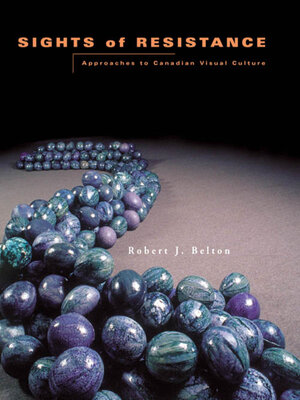
Sign up to save your library
With an OverDrive account, you can save your favorite libraries for at-a-glance information about availability. Find out more about OverDrive accounts.
Find this title in Libby, the library reading app by OverDrive.



Search for a digital library with this title
Title found at these libraries:
| Library Name | Distance |
|---|---|
| Loading... |
Few books on Canadian art provide an in-depth look at more than one art form from a variety of practical critical perspectives. Sights of Resistance offers both breadth and depth in an innovative but accessible introduction to Canadian visual culture. Robert Belton has an impossibly ambitious goal — to create a single-volume introduction to both visual culture and critical practice that neither creates a list of Canadian art's "greatest hits" nor promotes one way of knowing over another.
Belton deliberately includes in his overview both old favourites and many unfamiliar works of art, architecture, crafts, painting, photography, sculpture, and so on, placing as much emphasis on the study of a blanket as on the study of a legislative building. He demonstrates how all aspects of Canadian visual art interrelate to form a cultural heritage that is as rich as it is varied.To this end, he endeavours to leave no tradition, time period, or geographical area unmentioned in the numerous case studies he inserts into a broader theoretical framework, providing opportunities for developing radically different perspectives — and in this way the artwork becomes a site/sight of "resistance."
Belton deliberately includes in his overview both old favourites and many unfamiliar works of art, architecture, crafts, painting, photography, sculpture, and so on, placing as much emphasis on the study of a blanket as on the study of a legislative building. He demonstrates how all aspects of Canadian visual art interrelate to form a cultural heritage that is as rich as it is varied.To this end, he endeavours to leave no tradition, time period, or geographical area unmentioned in the numerous case studies he inserts into a broader theoretical framework, providing opportunities for developing radically different perspectives — and in this way the artwork becomes a site/sight of "resistance."







